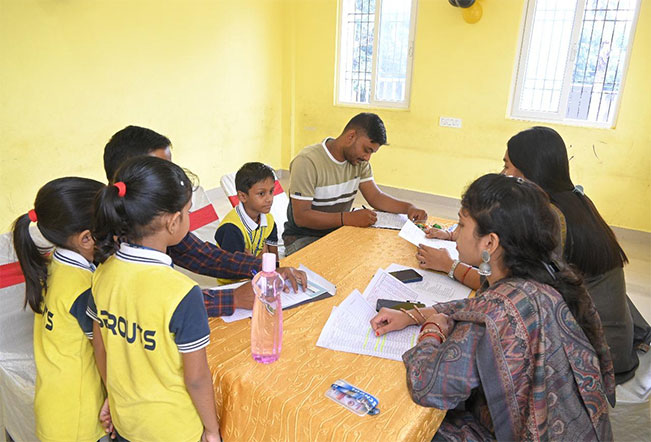OUR PROGRAM INCLUDES
- Individualized attention to each child to cater to their diverse learning needs.
- Talented, experienced and dedicated teachers with linguistic and cultural diversity.
- Upholds Indian culture and values, while fostering global citizenship.
- A safe and secure learning environment, with focus on student well-being.
- High-quality student leadership opportunities including exposure to leaders, innovators and iconic personalities from all walks of life.
1. Assessment of Individual Needs
Initial Assessments: Use standardized tests, observations, and informal assessments to identify each child's strengths, challenges, and learning styles.
Ongoing Assessments: Regularly monitor progress to adapt the approach as needed.
2. Personalized Learning Plans
Curriculum Differentiation: Create tailored lesson plans that allow for different paces, interests, and ability levels.
Goal Setting: Work with each child to set achievable, personalized goals that reflect their needs and aspirations.
3. Flexible Grouping
Small Groups: Form small, dynamic groups based on shared learning objectives or complementary skills to foster collaboration and peer learning.
One-on-One Support: Provide opportunities for individual attention from educators or support staff.
4. Diverse Teaching Methods
Varied Instructional Strategies: Incorporate a mix of visual, auditory, and kinesthetic teaching methods to engage different learners.
Technology Integration: Utilize educational technology and tools that can adapt to each child's learning pace and style.
5. Nurturing Environment
Supportive Atmosphere: Foster a classroom culture that is inclusive and encourages collaboration, respect, and empathy.
Social-Emotional Learning: Integrate activities that promote emotional intelligence, resilience, and interpersonal skills.
6. Involvement of Parents and Caregivers
Regular Communication: Keep families informed and involved in their child’s learning journey through meetings, newsletters, or digital platforms.
Workshops and Resources: Provide resources and workshops for parents on how to support their children's learning at home.
7. Professional Development for Educators
Training Programs: Offer ongoing training for educators on the latest strategies in differentiated instruction and special education approaches.
Collaboration and Sharing Best Practices: Encourage teachers to share successes and challenges, fostering a community of support.
8. Feedback and Adaptation
Collect Data: Use feedback from assessments, parents, and the children themselves to continually refine the program.
Be Flexible: Be willing to make adjustments to the curriculum and teaching methods as you learn what works best for each child.
By focusing on individualized attention and creating a tailored learning environment, your program can effectively cater to the diverse needs of each child, promoting both academic success and personal growth. How do you envision implementing these ideas in your context?
Do you dream that
your child will become
intelligent?
The concept of school and pre-school education consists of 3 programs of development and training in our academy, developed in collaboration with the institute of the children's university, which will help your children to learn subjects in the best possible way.
Education from birth
begins with us :
Our children's academy, together with one of the oldest private schools, created a joint school preparation project. The goal of the project is the harmonious development, socializationfor admission to the best educational institutions of our city.

